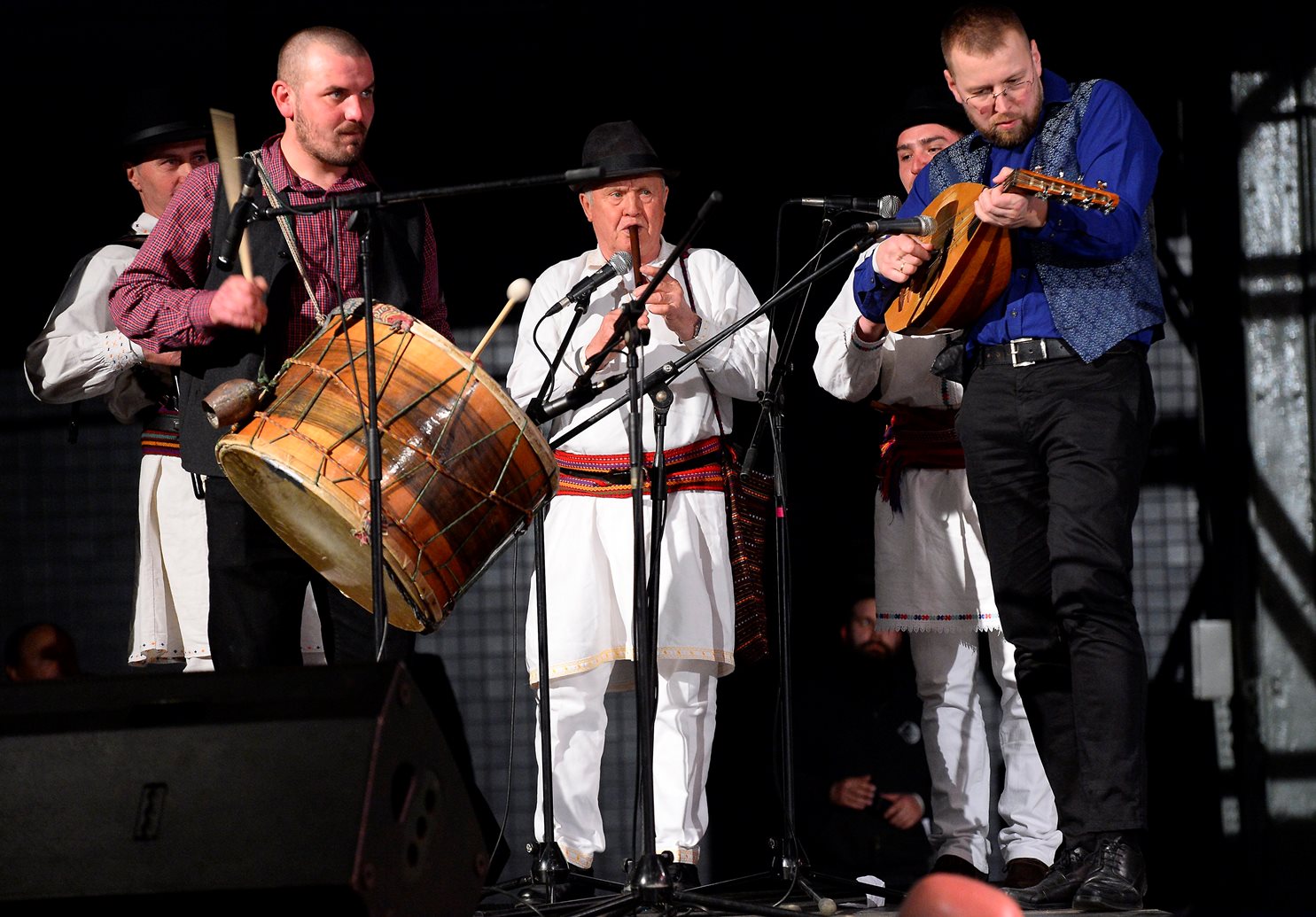Saturday evening the 23rd edition of the Csángó Ball was held in Budapest, which brought back this year the pilgrimage traditions of the Csángós – the Roman Catholic ethnic group originally speaking an ancient version of Hungarian from the middle ages. The event was first organized 22 years ago with the aim of introducing the archaic Csángó culture to the Budapesters and organizers would like to show the rich traditions and folk art of both Gyimesi/Ghimeș and Moldavian Csángós. Each year the ball starts with a thematic show performed by Csángó musicians, singers and dancers – this year connected to the pilgrimage traditions – which is followed by a dance house until dawn, where every guest can join, and learn the Csángó dances.

Even though Saturday evening many events took place in parallel at the same venue, it was still easy to find the pavilion where the Csángó Ball was held, as long as front of its entrance Gyimesi Csángós were offering from a huge cauldron their national food, called “cottage cheese puliszka” to the arriving guests.
The main show started around half past seven, when the nearly hundred traditionalists, dressed up in folk costumes, knelt down -back to the audience – and prayed. Then in the next 80 minutes we could see various dances, songs, and music performed by both old and young traditionalist and even children from Dumbravény/Dumbrăveni, Klézse/Cleja, Külsőrekecsin/Fundu Răcăciuni, Lábnyik/Vladnic, Pusztina/Pustiana, Somoska/Somușca, and the Gyimesek/Zona Ghimeşului and from musicians both from Csángóland and Hungary. The thematic of the show was built around their summer pilgrimage traditions, when Csángós hit the road to visit their relatives, and friends living in the neighboring villages and eat, drink and talk with them all night, and revel until the sunrise.
The show ended with the singing and praying of the Csángó-Hungarian folk singer and ceramics artist, Mária Petrás. During her singing the lights went out and everyone on stage held a candle in their hand instead, which created such an intimate atmosphere that we could feel ourselves more like being in a temple of a small Csángó village rather than in a big hall of a metropolis. During the last pray, the candles started to be blown out one by one, so at the end the whole stage was wrapped in darkness and silence. After a few heartwarming moments, enthusiastic applause rewarded the performance.
The dance house was opened by the performance of Csángó children from Lábnyik.
The event ended with a dance house, seven different bands playing Csángó, Moldovian, Gyimesi and Bukovinai music and people dancing to the tunes all night long.
Hundreds of guests were dancing together with the Csángós in the dance house all night long
Title image: Dancers on the stage at the XXIII. Csángó Ball in Budapest on 23. February 2019. (Photo: MTI/Lajos Soós)